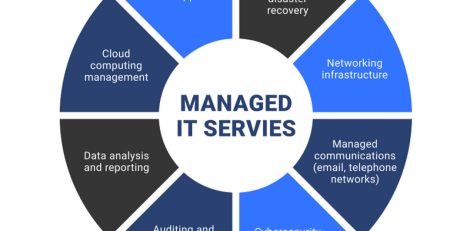Phishing And Other Web-Borne Threats Pose Serious Risk 2023
Cyber threats are serious business, which is why it’s important to be as informed about them as possible. Luckily, you don’t need special training to stay safe online. In fact, there are some things that anyone can do to reduce their risk of falling victim to cybercrime.
One of these things is avoiding phishing scams. While most people have heard of this threat before, few know what actually constitutes a scam phishing email. That’s why today we’re going take a look at everything you need to know about scammers who send spoofed emails – or fake messages designed to trick you into handing over your personal information.
Phishing isn’t just annoying; it also puts others in danger of being tricked into giving up sensitive data like usernames and passwords, credit card numbers, and even money. If you’ve received an unexpected email asking for help paying off debt or banking login details, it’s probably a scam.
Luckily, you aren’t alone in knowing how to protect yourself from phishing scams. There are many resources available free of cost, both online and offline. Between Google and YouTube, social media sites like Facebook and Twitter, and other websites dedicated to protecting users, you’re sure to find something helpful.
History of phishing

Recent high profile examples like this one show that even though phishing is an old threat, it still poses a significant risk to your personal information and money. Cybercriminals use fake emails or websites to direct you to do something malicious such as install malware onto your device or pay them for access.
In fact, almost half (46%) of all cybercrime happens because someone gets tricked into giving up their credentials and/or payment info through fraudulent means. In some cases, thieves will go so far as to create an online identity to make the attack more plausible. For example, hackers may pose as a legitimate company in order to trick you into clicking on an attachment or link.
Phishing isn’t just annoying, however; it can be very expensive. The average cost per phished credential is around $300 according to Verizon. Thicker security measures help protect you from becoming a victim of fraud, but only if you actually implement them!
That’s why it is important to be careful about what you share online and which sites you trust. It also goes without saying that social media makes it easy for bad people to connect with you, so making sure you are cautious there is crucial too. Stay vigilant by using tools to recognize suspicious activity and prevent potential threats.
What is a website threat?
A web threat is when an unknown third party manipulates your browser or device to visit either fake or malicious websites.
This can include redirecting you to a completely phony site that seems legitimate, or even downloading malware onto your computer or smartphone in the form of a program or app.
It’s important to remember that even if a link looks authentic, it may still be fraudulent or unsafe. You should never click on a link in an email or text message unless you know for sure that it’s safe!
That goes for video links as well. Never start watching a YouTube clip or movie channel update that you don’t normally watch without verifying that they are actually belonged to them.
You might also encounter what’s called a false sense of security. Some sites use questionable practices (like using free Wi-Fi or limited access) that could put people at risk of cybercrime.
Tips for protecting yourself
The risk of cybercrime is constantly rising, with hackers becoming more sophisticated as they pilfer your personal information or take over your online accounts.
Threat actors are investing in automated software to carry out their scams, which makes it even easier for them to infiltrate protected areas of websites and apps. This creates an environment where someone can easily be targeted because there’ll be no way to know if an alert is legitimate or not.
With so many people using smartphones now, having access to all kinds of sensitive data adds another layer of vulnerability. More than two billion smartphone users make it easy for criminals to target valuable info like usernames, passwords, and credit card details.
Cybercriminals often use stolen credentials to log into victims’ accounts to steal even more money or material goods. They may also spread malware by sending you fake messages or emails that contain links to malicious sites.
If you ever experience suspicious activity on a website or app, never respond to the prompts, remove the item immediately, and change your password.
Tell your friends
With the rise of mobile devices, web-based applications, and social media sites, it is more possible than ever to access major services like email or chat programs remotely.
That being said, there are now many opportunities for malicious actors to reach you directly through digital means.
Phishing emails and apps can be very sneaky, so try to recognize them if you come across one.
Be wary of messages that ask you to update your account information or confirm purchases. If you feel uncomfortable doing either, then do not click any links in the message or enter any sensitive information.
Threat groups sometimes will use pictures or videos as proof that they belong to the company you’re trying to trust. They may even include fake logos and/or slogans.
They will also likely say how important their service is to you, or suggest doing something helpful for you. By using these tools, you have allowed someone to connect with you, which makes it easier for them to steal your personal information or perform other fraudulent acts.
Watch your bank account
Recent developments in technology have made it easy for malicious actors to steal your personal information, take control of your accounts, and even raid them.
This is particularly concerning if you are an online shopping fanatic or frequent user of credit cards that reward you with points towards future purchases.
Thieves can use this info to make fake accounts to purchase products from you or things like gift certificates that they can then sell or give away as cash.
It’s important to be aware of potential threats to your financial health so that you can take appropriate action. In fact, many banks now offer tools that monitor for suspicious activity and alert you when something seems off.
Report your suspicions to the FBI

Recent reports of phishing scams is an alarming reminder that even with the prevalence of online shopping, some individuals will choose to use fraudulent means to profit from you. While most cases of fraud occur due to someone’s inability to cope with their own financial situation, others actively seek out ways to make money through deceit.
In fact, many scammers advertise free credit cards or other valuable items as part of the scam. By giving away free goods, they earn attention and sympathy from potential victims who feel compelled to help them “save them” by handing over their personal information.
ThreatTrack Systems has published an article about some recent examples of this behavior. If you find yourself targeted in such a scheme, do not provide any additional info beyond what is asked for!
Most banks require proof of identity before issuing a new account, so it is important to be very careful about sharing private information like addresses, phone numbers, and emails. Even if you are sure that you have never received a credit card offer, do not give anyone access to these things until you verify that they are actually connected to legitimate business accounts.
Keep your software up to date
Recent developments in technology have made it easy for malicious actors to create fake apps or websites that seem authentic. These fraudulent applications and sites can gather sensitive information from you, such as your username and password for online accounts, or even credit card details.
They’re also not too difficult to make at home, which means anyone can potentially produce one.
Threat researchers refer to these fraudulent apps and sites as “phished” services because they often mimic real services or take advantage of known vulnerabilities to gain access to important data.
It is very common for phishing scams to be spread via social media channels like Facebook, so be extra careful what you share online and who you trust.
Do not share your personal information

Recent high profile phishing cases have shown that even seemingly harmless messages can be crafty enough to fool you into handing over valuable information.
Phishing is more than just an annoying way to make you lose sleep. It can cost you money or worse, expose you to serious risks. Online fraud happens every minute of every day across all mediums including email, social media, chat apps, and mobile devices.
It is estimated that 98% of people who fall for online scams will provide some sort of identifying info like username and password, credit card numbers, or health information. This can seriously hurt your financial situation or put you at risk for identity theft.
Phishers often go undetected because most people are aware of the dangers of giving out too much personal information. They may also underestimate the severity of what could happen if they do give in.
Thieves sometimes use this information to rack up large debts, take out loans using your name, or create new accounts with stolen credentials.










Leave a Reply